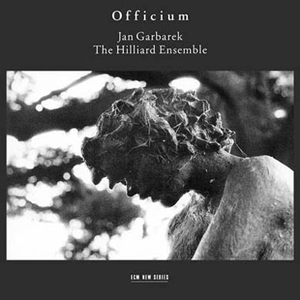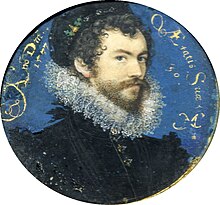
In Western classical music, a motet is mainly a vocal musical composition, of highly diverse form and style, from high medieval music to the present. The motet was one of the pre-eminent polyphonic forms of Renaissance music. According to Margaret Bent, "a piece of music in several parts with words" is as precise a definition of the motet as will serve from the 13th to the late 16th century and beyond. The late 13th-century theorist Johannes de Grocheo believed that the motet was "not to be celebrated in the presence of common people, because they do not notice its subtlety, nor are they delighted in hearing it, but in the presence of the educated and of those who are seeking out subtleties in the arts".

Johannes Ockeghem was a Franco-Flemish composer and singer of early Renaissance music. Ockeghem was the most influential European composer in the period between Guillaume Du Fay and Josquin des Prez, and he was—with his colleague Antoine Busnois—the leading European composer in the second half of the 15th century. He was an important proponent of the early Franco-Flemish School.

Guillaume Du Fay was a composer and music theorist of early Renaissance music, who is variously described as French or Franco-Flemish. Considered the leading European composer of his time, his music was widely performed and reproduced. Du Fay was well-associated with composers of the Burgundian School, particularly his colleague Gilles Binchois, but was never a regular member of the Burgundian chapel himself.
Antoine Brumel was a French composer. He was one of the first renowned French members of the Franco-Flemish school of the Renaissance, and, after Josquin des Prez, was one of the most influential composers of his generation.

Jan Garbarek is a Norwegian jazz saxophonist, who is also active in classical music and world music.

ECM is an independent record label founded by Karl Egger, Manfred Eicher and Manfred Scheffner in Munich in 1969. While ECM is best known for jazz music, the label has released a variety of recordings, and ECM's artists often refuse to acknowledge boundaries between genres. ECM's motto is "the most beautiful sound next to silence", taken from a 1971 review of ECM releases in Coda, a Canadian jazz magazine.

Cristóbal de Morales was a Spanish composer of the Renaissance. He is generally considered to be the most influential Spanish composer before Tomás Luis de Victoria.

The Taverner Choir, Consort and Players is a British music ensemble which specialises in the performance of Early and Baroque music. The ensemble is made up of a Baroque orchestra, a vocal consort and a Choir. Performers place emphasis on a historically informed performance practice and players work with restored or replicated period instruments.
Manfred Eicher is a German record producer and the founder of ECM Records.
In Renaissance music, the cyclic mass was a musical setting of the Ordinary of the Roman Catholic Mass, in which each of the movements – Kyrie, Gloria, Credo, Sanctus, and Agnus Dei – shared a common musical theme, commonly a cantus firmus, thus making it a unified whole. The cyclic mass was the first multi-movement form in western music to be subject to a single organizing principle.
Pro Cantione Antiqua of London (PCA) is a British choral group which was founded in 1968 by tenor James Griffett, counter-tenor Paul Esswood, and conductor and producer Mark Brown. Their first concert was at St Bartholomew's, Smithfield with Brian Brockless conducting but, from an early stage, they were closely associated with conductor and musicologist Bruno Turner. Arguably, they were the leading British performers of a cappella music, especially early music, prior to the founding of the Tallis Scholars.
Huelgas Ensemble is a Belgian early music group formed by the Flemish conductor Paul Van Nevel in 1971. The group's performance and extensive discography focuses on Renaissance polyphony. The name of the ensemble refers to a manuscript of polyphonic music, the Codex Las Huelgas.
Carolus Luython was a late Renaissance composer of the "fifth generation" of the Franco-Flemish school.

Officium is a 1994 album by Norwegian saxophonist Jan Garbarek and early music vocal group Hilliard Ensemble. Based on 12th- to 16th-century liturgical works by composers including Cristóbal de Morales and Perotinus Magnus, the album was recorded at the monastery of Propstei St. Gerold in Austria.
The Sound and the Fury is an Anglo-German vocal group convening in Brixen and Vienna, specialising entirely in performance of renaissance polyphony of the Franco-Flemish school.
The ensemble A Sei Voci was a French vocal group founded in 1977 and which ceased in 2011.
Rogers Henry Lewis Covey-Crump is an English tenor noted for his performances in both early music and contemporary classical music. He has sometimes been identified as an haute-contre tenor. He has performed for over 50 years in choirs and ensembles such as the Hilliard Ensemble, and as a soloist. He has been especially in demand for the part of the Evangelist in Bach's St Matthew Passion and St John Passion. He also specialises in vocal tuning, and has written articles on the subject.

Officium Novum is an album by Norwegian saxophonist Jan Garbarek and the Hilliard Ensemble recorded in Austria in 2009 and released on the ECM label. The album is a sequel to their previous collaboration Officium (1994).
Formed in 2000, the Musica Nova ensemble unites singers and musicians under the artistic direction of singer and conductor Lucien Kandel. A passionate quest in search of emotion through music drives the group to produce a diverse musical programme. From the Middles Age to Baroque, Musica Nova departs into various musical periods and universes. The ensemble approaches its music with an eye for historical accuracy, through the use of original manuscripts. Working with the documents from the era is conducted with reflection upon the musical rules of the time as well as the intended nuances of the pieces. The singers and musicians read their music in facsimile and their interpretation of it is thus inevitably modified. The result is a sound, a movement, a line, which makes Musica Nova so exceptionally rich and vibrant; the acoustic of which transports the listener; temporally and spiritually. The Musica Nova Ensemble appears on prestigious stages in France and all over the world. Recordings of their works are available, some of which have set the standard for current adaptations of the musical style.

Mnemosyne is an album by jazz saxophonist Jan Garbarek released in 1999 by ECM Records. The album is a sequel to Officium (1994), one of the most significant recordings in Garbarek’s career. Like the first album, it is a collaboration with the vocal ensemble the Hilliard Ensemble.










